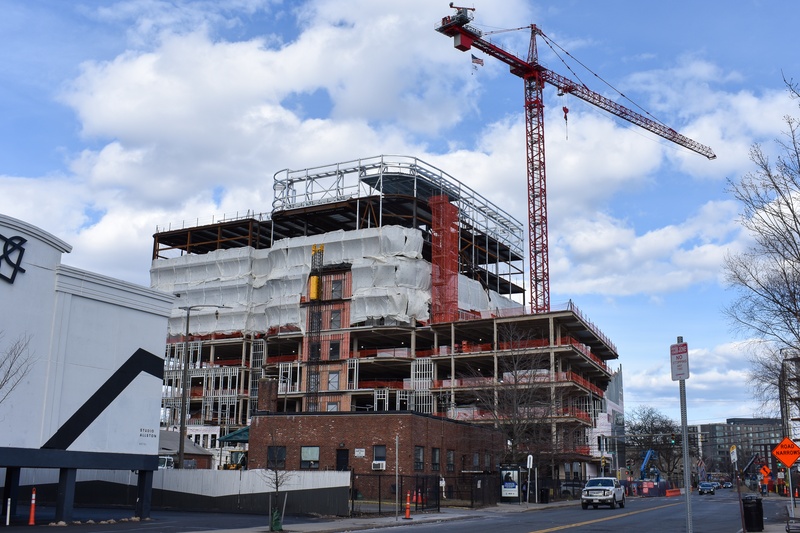{shortcode-dad16bcb5dff72f368b9ae3e8af16c4267067a87}
Harvard filed its 2025-2035 Institutional Master Plan for its Allston campus on Tuesday, officially marking the next phase of negotiations with Boston officials over the University’s planned decade of development.
The IMP now enters a two-month period of public comment, giving public officials, city departments, and Allston residents the opportunity to submit their input and requests for changes before the final document is approved.
At the core of that process will be the University’s proposed community benefits package — a set of commitments to local projects and initiatives expected to reach tens of millions of dollars.
Elizabeth A. “Liz” Breadon, the district’s representative in the Boston City Council, will be an influential figure, as will as the Harvard Allston Task Force — a city-appointed group of residents advising the city and Harvard on the community benefits package.
Boston requires large nonprofit institutions to file decennial master plans that document their current holdings and surrounding engagements — like local water and sewer systems, traffic flows, parking, and climate change mitigation. The process aims to help the public keep track of the expansion and impact of the city’s growing number of hospitals, universities, and museums.
But IMPs also typically come with benefits packages to the surrounding neighborhood, both as a show of goodwill to the community, and to help win approval from the Boston Planning Department. Harvard has historically given big to Allston.
The University’s last IMP, approved in 2013, came with a raft of benefits totaling $43 million. It included support for public realm improvements, the Harvard Ed Portal, affordable housing, and grants to neighborhood nonprofits.
Tuesday’s filing contained few concrete details about what benefits Harvard might propose this time around, except to note that it hoped to continue funding the Harvard Ed Portal, the Harvard Allston Partnership Fund — which distributes $200,000 annually to local organizations — and ice time at its Bright Hockey Center.
“Harvard looks forward to continuing discussions with community and City partners to determine the final suite of community benefits for the next ten years, maintaining that Harvard community benefits should be commensurate to the scale and scope of the operations and impacts associated with the ten-year IMP,” the University wrote at the end of the nearly 300-page IMP.
A public meeting held by the Planning Department last week previewed some discussions likely to arise over the final IMP.
At that meeting, Cindy Marchando, chair of the HATF, complained that it was more difficult for neighborhood residents to gain access to the Ed Portal than Harvard affiliates, who only need to show their Harvard ID.
Mark Handley, Harvard’s director of community and government affairs, responded that it was necessary to ensure everyone using the facility was an Allston-Brighton resident.
“We sincerely simply beg your forgiveness,” he said.
Harvard also responded to criticisms that some benefits approved over a decade ago have yet to be delivered. Construction of foot crossings over Soldiers Field Road, which separates the neighborhood from the Charles River, has been delayed for years as the Department of Conservation and Recreation has repeatedly postponed the project.
“Some benefits are not in Harvard’s control, and funds simply being available are not sufficient to move projects forward through planning and construction phases,” Harvard planners wrote in the document.
—Staff writer Jack R. Trapanick can be reached at jack.trapanick@thecrimson.com. Follow him on X @jackrtrapanick.














